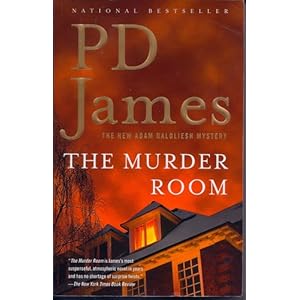
Rereading P.D. James with fresh eyes, I was surprised to notice that there's another trope at work among some of her later novels. Death in Holy Orders, The Murder Room and The Lighthouse each feature a series of short chapters building up to the inescapable death where, one after another, motives upon motives are stacked up. I think that this is an old Agatha Christie trope, but somehow I missed it the last time that I read James.
Where James succeeds is with her slowly ratcheting up the inevitability and hatred - this time out, even the suspect with the least likely reason to kill is every bit as resolved to do something about the problem, which might mean killing - so that when it finally happens, absolutely everything breaks down. All of those motives, and all of that anger, lead to desperation and terrible decisions. It's really fun watching Dalgliesh calmly instigate such squirming.
Unfortunately, The Murder Room features one of the most unbelievable and ridiculous coincidences I've ever seen in detective fiction. I really enjoyed the great red herring about the nature of the murders - they appear to be "copycat" or, at least, themed recreations of famous killings from the 1930s as celebrated in the "murder room" of an eccentric museum devoted to the period - and Dalgliesh's team is soon hunting for a witness who has evoked one such crime with passing words to the woman who finds the first victim's body. His haste in leaving the scene has an altogether more prosaic, albeit tawdry, explanation, but it's how the man is identified that beggars belief.
Fortunately, not every twist is that mundane. The business of the third victim is handled extremely well, and I really enjoyed the sinking feeling of realizing exactly what happened that delayed the emergency services. When James is on fire, she's untouchable. Sadly, she's not completely on fire throughout this novel, but enough that it doesn't always matter. Recommended with reservations.
No comments:
Post a Comment